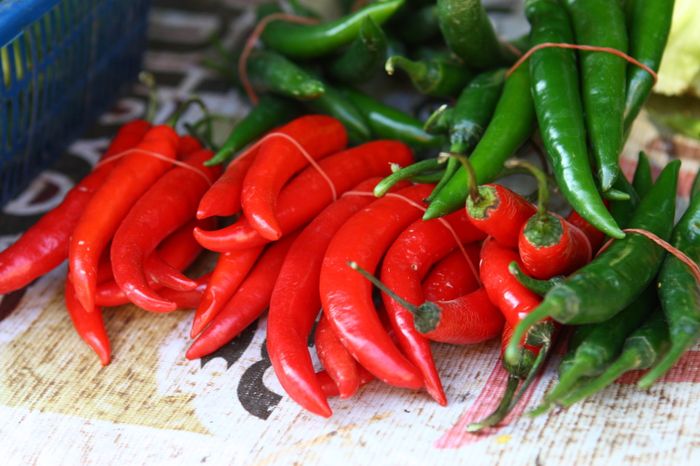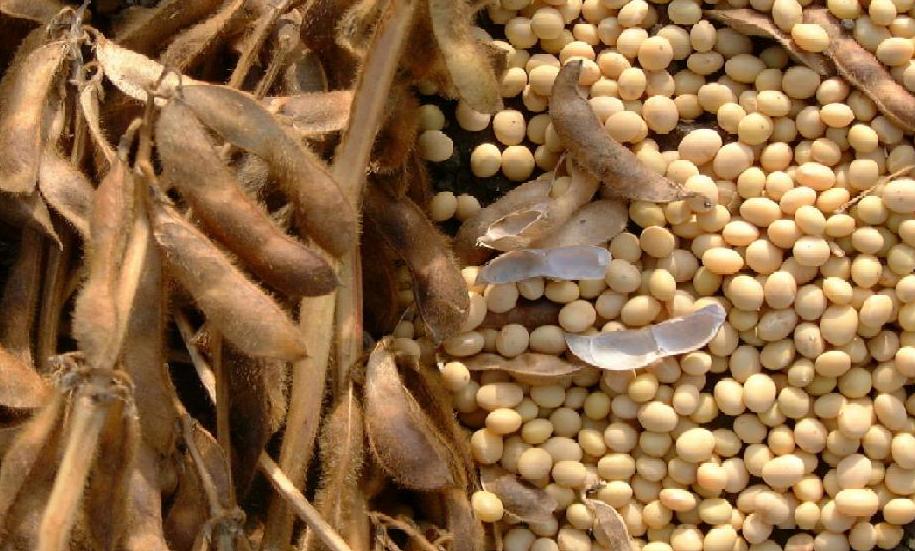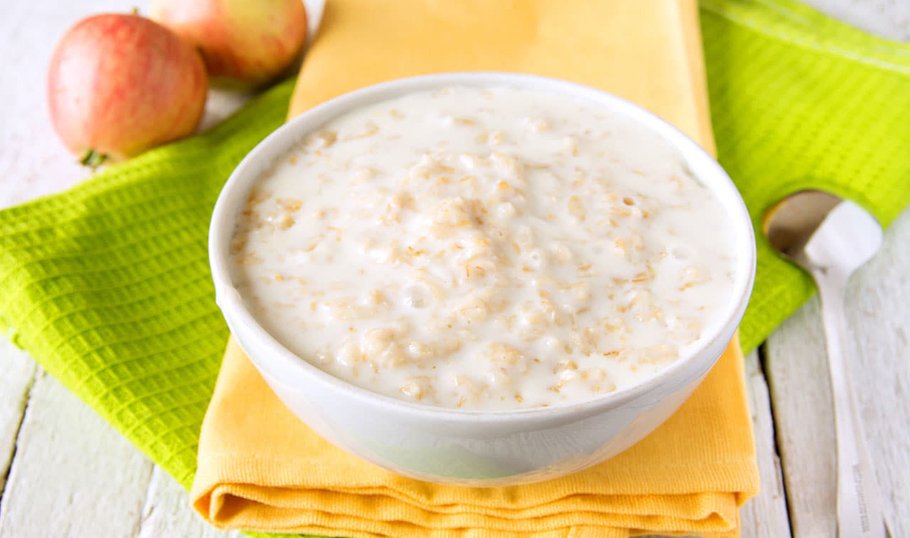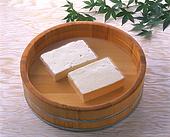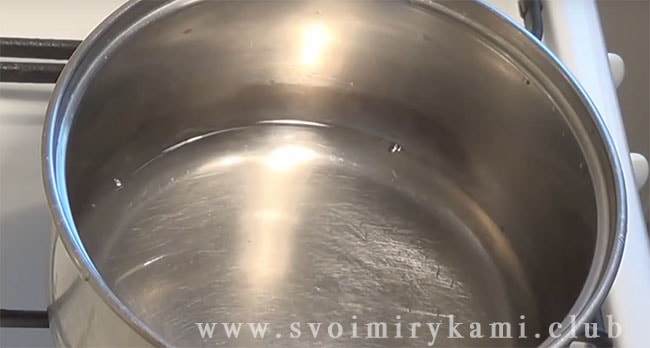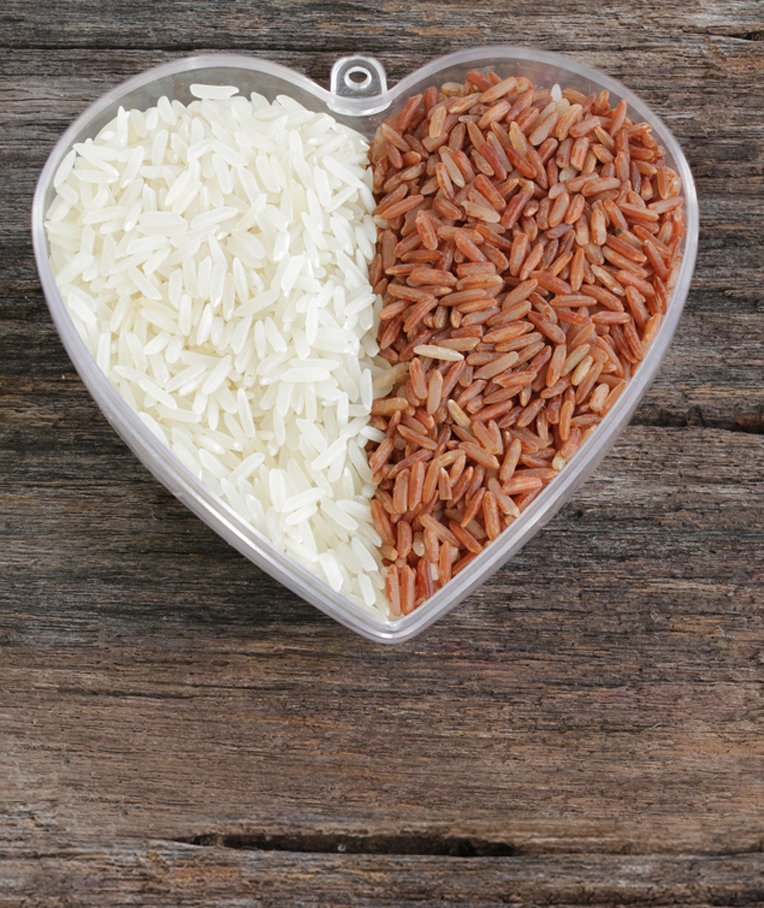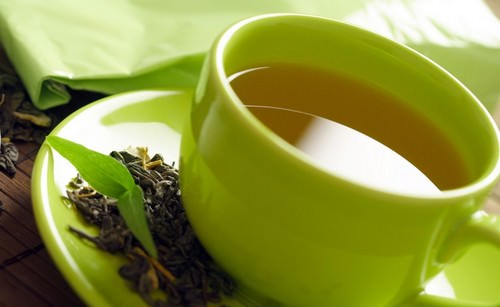What is useful brown rice for human health. Brown rice - composition and beneficial properties
Brown rice is a cereal crop that has a number of beneficial properties. This fact makes her extremely popular among fans of healthy eating. We will tell you in detail about all the features, as well as the benefits and harms of brown rice.
A brief excursion into history
Initially, this cereal plant served as the main dish in the diet of poor peasants in Asia. While the upper strata of the population consumed white rice. Brown rice was widely known in the second half of the 19th century, when Japanese sailors began to suffer from alimentary polyneuritis due to the scarcity of the daily diet, which was mainly based on white rice.
Japanese scientists conducted a number of studies and found that in white rice there are not enough vitamins, minerals and trace elements necessary for the human body, which were found in excess in brown rice. As a result, the daily menu for sailors was adjusted, which helped to eliminate this problem.
Product Description
This crop is not separate, as many consumers mistakenly believe. Brown rice is the seed of an annual herb that has not been fully processed and sanded. What distinguishes them from white rice seeds that go through a full processing cycle. Thanks to this approach, this cereal plant has a brown color and aroma with a slightly noticeable nutty note, which is also felt in the finished product.

Thus, the so-called bran shell remaining on rice has a lot of useful properties.
Calorie content and rice composition
The calorie content of this product is approximately 335 kilocalories per hundred grams.
Brown rice is rich in plant proteins, dietary fiber and amino acids. It also contains vitamin B, trace elements such as: zinc, calcium, potassium, magnesium, iron and others.

It should be noted separately that it does not contain gluten, so people with intolerance to this protein can safely eat brown long-grain rice, the benefits of which are obvious to the human body.
Product Benefits
Among the beneficial properties of brown rice (photo - in the article), the main, according to experts, are B vitamins, which are actively involved in the body's metabolic processes and produce collagen, which positively affects the condition of the skin.
A major role is played by trace elements, silicon and vanadium, which are responsible for tissue regeneration and blood supply. The amino acids that contain glycine and other elements are very important. They normalize the psychoemotional state of a person, improve memory and brain activity.
The benefit of brown rice is that it reduces the amount of cholesterol in the body. Substances of the group of phytosterols that make up its composition contribute to the cessation of the formation of cholesterol plaques.
Scientists have long proved that this crop contains a large amount of such a useful substance as fiber. As you know, it normalizes the work of the gastrointestinal tract and gently removes carcinogens and other harmful substances from the body.
Harm brown rice
Despite the mass of beneficial properties for the body, for some this product is prohibited for use. A contraindication is usually a tendency to diseases such as colitis or frequent constipation. Also, people who are prone to obesity will have to reduce the product in their diet, since brown rice is quite high-calorie.

It is worth paying attention to the fact that many experts advise buying cereal crops of domestic production or grown in neighboring countries. This warning is due to the fact that the main exporters of this product to domestic supermarkets are the countries of Southeast Asia. Due to the remoteness from our borders and, as a result, long transportation, manufacturers go to the trick to avoid damage to the product. They intentionally treat it with talc and glucose, which in turn kills all the good qualities of rice.
And one more advice to fans of healthy eating from specialists comes down to the following: you need to pay attention to the packaging date of this product. This is due to the rice processing process, in which there remains a bran shell containing oils in its composition, which, in turn, affects the shelf life of the product. This period is usually from three months to six months. Therefore, after purchase, rice seeds must be stored in a vacuum bag or use a container with a tight lid.
Cooking method
There are several ways to cook brown rice. In this article we will look at a few of the most popular, one of which is cooking rice in a pan.
To do this, you will need an average pan with a thick bottom. Before cooking, rice must be soaked for several hours in cold water. Then you need to take a measuring cup and pour water into the pan so that the proportion of 2.5: 1 is observed, that is, to prepare one glass of rice, you need two and a half glasses of water.
It is necessary to cook rice under a tightly closed lid over low heat. The cooking process takes approximately 40 minutes. After the rice is cooked, it is necessary to remove it from the heat and let stand a little. Then pour into a dish and serve.

The second popular way to cook rice is to bake it in the oven. To do this, the oven must be heated to a temperature of 200 degrees. At this time, thoroughly rinse the rice with cold water until the water becomes clear. Then we put it in a baking dish and fill it with boiled water so that a proportion of 1.5: 2.5 is observed. Then we close the form with foil and put in the oven for one hour.
Many housewives currently prefer to use rice cookers. In order to cook rice in a rice cooker, you must first soak brown rice for a couple of hours. Then drain the water and transfer the product to the rice cooker, pour water in a ratio of 1: 2.5. Rice cooking time in the rice cooker is approximately 45 minutes. After which it must be mixed and can be served.
Using Brown Rice For Weight Loss
Nutritionists advise using this cereal product for diets and fasting days. Firstly, brown rice is a complex carbohydrate, which means that it will be slowly digested when consumed. Thus, rice will save you from the debilitating feeling of hunger.
Many experts unanimously stated that due to its composition, rice is able to dull cravings for various sweets, which are fast carbohydrates and are contraindicated in diets. Also, given that it contains a lot of useful vitamins and minerals, we can confidently talk about the invaluable benefits that it will bring to your health.

There is a separate observation and the fact that using this product to obtain the desired effect, according to experts, costs no more than two or three times a week. In addition, do not forget to drink a large amount of water or herbal and green teas. This will help remove toxins from the body and improve the functioning of other vital organs.
Thus, adhering to such simple rules, you can lose three to five kilograms in a couple of weeks.
Consumption culture
The culture of eating brown rice is quite diverse. In addition to eating in its pure form, it is perfect as a side dish for any meat dishes, as well as fish and all kinds of seafood. Many housewives cook rice and risotto from rice. It goes well with fruits and dried fruits. Many have rated brown rice as one of the important ingredients for various salads.

It is worth paying attention that during diets and fasting days you can diversify the taste characteristics of dishes using various sauces, seasonings and spices.
For the preparation of milk porridge, pilaf or Spanish paella, we most often use white rice. A brown version of this beloved by many groats on our tables is extremely rare. Meanwhile, the benefits and nutritional qualities of brown unpolished rice are much higher due to the high content of vitamins and trace elements in the grain shell. The scientists began to study the benefits and harms of brown rice for the human body at the end of the 19th century, when it was discovered that long-distance sailors often suffer from an unexplained disease that depresses the nervous system and leads to paralysis of the limbs.
Japanese experts found that one of the main causes of the disease is the predominance of white rice on the menu. At the same time, on ships where people were fed meals from unprocessed cereals, such incidents were not observed. The beneficial properties of brown rice, consisting in the presence of a set of B vitamins, have created an effective cure for polyneuritis (beriberi disease). The main component of the vitamin preparation was rice bran extract.
The benefits of brown (brown) rice - 20 beneficial properties
-
High antioxidant activity
Brown rice is a supplier of antioxidants that protect cells from the harmful effects of free radicals. In a comparative analysis of white and brown rice, experts confirmed the hypothesis that unpolished rice has excellent antioxidant properties, helping to prevent numerous diseases caused by oxidative processes, such as coronary heart disease.
-
Beneficial effect on the cardiovascular system
Brown rice has a lot of selenium, which ensures stable heart function. The use of whole grains, such as brown unpolished rice, helps to increase the patency of the arteries, cleansing their walls of mineral deposits. This particular protective effect reduces the likelihood of cardiovascular disease, including hypertension. As scientific studies have shown, in the shell of brown rice there are trace elements that block the activity of the hormone angiotensin II, which prevents the narrowing and hardening of arteries, and serves as a prevention of hypertension and atherosclerosis.
-
Removal of excess cholesterol
Brown unpolished rice is the best choice for a healthy diet and to fight high cholesterol. Specialists who studied the properties of brown rice came to the conclusion that the substances contained in it have hypocholesterolemic qualities, regulate cholesterol catabolism, and are involved in the metabolism of lipids and glucose.
The results of another study showed that the presence in the diet of subjects with chronic alcohol abuse of untreated rice showed a significant increase in serum cholesterol concentration hdl. This avoids fatty degeneration of the liver and other unpleasant health effects caused by excessive drinking.
-
Relief of breathing in asthma
-
Brain optimization
Germinated brown rice seeds are recommended for the prevention of neurodegenerative complications arising from exposure to brain cells with gamma-aminobutyric acid. Substances inhibiting the activity of a harmful enzyme known as protylendopetidase have been found in brown rice sprouts. Its excess in the body increases the risk of Alzheimer's. In addition, the use of sprouted grains of brown rice will help prevent a number of other brain disorders, for example, memory loss and a decrease in the productivity of mental activity.
-
Brown rice: benefits and harms for diabetics
Laboratory studies by scientists have shown that brown rice has a lot of phytic acid, fiber, and polyphenols important for our body. Complex carbohydrates provide a slow release of sugar from consumed food, which positively affects the well-being of people with diabetes.
Specialists of the American Association of Endocrinologists offer the use of brown rice, rich in nutrients, in the diet of diabetics in order to ensure the intake of essential vitamins, fiber and minerals. This product will not cause harm to the body of people with diabetes if you do not cook dishes with a high content of fat and sugar from cereals.
-
Digestive Stabilization
Brown rice is one of the best foods you need to include in your daily diet to maintain a healthy digestive system. Plant fibers increase intestinal motility and contribute to its regular emptying. A comparative analysis of the properties of white and brown unpolished rice showed that coarse membranes prevent an increase in the acidity of gastric juice, retain moisture well, and soften the structure of feces.
-
Antitumor effect
Eating high fiber foods increases your body's resistance to certain types of cancer (colon, breast, leukemia). Scientists believe that the antitumor effect of brown rice is due to the presence of phenols, acids and antioxidants in it, inhibiting the growth of cancer cells.
-
Prevention of gallstone disease
Brown rice can be called one of the leaders among the products that are suppliers of coarse dietary fiber, which regulate many processes in our body. The results of a medical study published in the American Journal of Gastroenterology have shown that high fiber diets reduce gallstones.
-
Stabilization of the emotional state
Sprouted seeds of brown rice have antidepressant properties, helping to cope with the symptoms of anxiety and overexcitation of the nervous system. Laboratory studies have revealed a number of essential amino acids in brown rice, such as glutamine, glycerin and GABA. These components, entering the body with food, normalize the functioning of the nervous system, help eliminate the effects of stress and depression, send signals of calm and well-being to the brain.
-
Sleep quality improvement
Eating brown unpolished rice will help cope with insomnia. This cereal is a natural source of melatonin, which is called the sleep hormone for its ability to have a relaxing effect on the nervous system, accelerating falling asleep and guaranteeing a good night's rest.
-
Immunity increase
In brown rice, the presence of vitamins, minerals and essential components of phenolic acid is high, which increases the body's resistance to various viruses and infections. By eliminating the deficit of these nutrients, wound healing is accelerated, and the risk of morbidity during seasonal flu epidemics is reduced. Brown rice dishes are recommended for use during the recovery period after a protracted illness or surgery.
-
Bone and spine strengthening
Eating brown unpolished rice promotes bone strength. The cereal contains a lot of magnesium and calcium, which positively affects the structure of bones, prevents their fragility, and serves as a prophylaxis of arthritis, osteoporosis and other similar diseases.
-
The benefits of brown rice for children
Whole brown rice and cereal from it can be called an ideal product for baby food. This cereal in comparison with white rice flakes is the best option, as it contains many nutrients, including proteins, necessary for the successful growth and development of the child's body.
-
Women's Health Benefits of Brown Rice
The phytonutrient lignin contained in brown rice plays an important role in the prevention of breast cancer and heart disease. A survey conducted among several hundred women convincingly proved that with the use of whole grain products, the risk of breast cancer is reduced by 2 times.
-
Positive effects on the emotional state of nursing mothers
Nutritionists recommend that women use sprouted brown rice on their menu during lactation. This will improve mood, get rid of fatigue, increase the body's resistance to stress, colds and infectious diseases. For the preparation of cereals and main dishes brown long-grain indica rice is well suited, characterized by its attractive appearance, excellent taste and delicate nutty aroma.
-
The benefits of brown rice for weight loss
Brown unpolished rice, due to the presence of manganese, can be included in diets to reduce body weight. This trace element is involved in the breakdown of fats, which is a favorable factor in the presence of excess weight. In addition, manganese increases the activity of glutathione peroxidase, an antioxidant enzyme that increases the level of “good” cholesterol. To enhance the effectiveness of brown rice in the fight against obesity, experts recommend consuming germinated seeds.
-
Skin youthfulness
Brown rice has a high selenium content. This microelement, acting on epidermal cells, maintains skin elasticity and relieves inflammatory processes. To make a rejuvenating face mask, you need to mix half a tablespoon of ground flour into rice with 1 tablespoon of yogurt. The composition is applied to the skin, kept for 10 minutes, and then washed off with warm water. Also, to care for problematic or aging skin, you can use a decoction of rice bran.
-
The benefits of brown rice for hair
This cereal is an excellent way to maintain healthy hair. Vitamin B1, B3, B6, vitamin E, as well as potassium, folic acid, and vegetable fiber are present in brown unpolished rice. These substances are necessary for hair growth and strengthening. If your hair is prone to loss, has lost its shine and elasticity, prepare a restoring mask by mixing rice flour and egg white in equal proportions. Then, in this mixture you need to add a glass of boiled water, beat until bubbles appear and apply to the scalp, evenly distributing along the strands. Wash off the mask after 10 minutes in the shower without using shampoo. With this treatment, dirt, excess fat are removed from the hair, the roots are saturated with trace elements and vitamins.
-
Prevention of asthma at an early age
Studies show that the presence of whole grains of brown rice in combination with fish in the diet of babies reduces the likelihood of asthma and wheezing symptoms by 50%.
Brown rice - harm and contraindications
Despite the fact that the benefits of brown rice have been repeatedly proved by the results of numerous scientific studies and practical observations, in some cases this product can harm the body.
- This is mainly due to violations of the storage and transportation of cereals. To ensure the presentation of grain during long-distance transport, it is often treated with talc, which, in combination with glucose, causes a number of undesirable reactions from the digestive system.
- When buying brown rice in a store, you need to give preference to a domestic product, in extreme cases, grown in neighboring countries. Rice brought in from other continents may not meet sanitary standards. It should also be borne in mind that during prolonged storage, cereal loses a significant part of its useful qualities. Therefore, you must pay attention to the date of manufacture indicated on the package.
- The main thing to remember is that in any meal you need to observe moderation. The presence of too much brown rice in the daily menu can cause indigestion, flatulence, diarrhea, or constipation.
What else is useful?
Residents of Asian countries are considered true centenarians with good health and a rich supply of energy. These components are largely dependent on healthy and high-quality foods. The main component of their daily diet is rice. Especially popular and useful is a brown or brown variety.

What does brown rice look like and how does it differ from ordinary?
This variety has many names that came into use - “brown”, “cargo”. Brown and white rice represent the same product. They differ only in manufacturing processing using a special mechanism. During the processing process, brown rice is peeled from the yellow top peel, as a result of which the grain retains its bran shell. It is this outer shell that gives the rice cereal a pleasant aroma and nutty taste. That's all the differences. In shape, the grains are elongated, not too large. Light coffee tones and even the colors of white chocolate can be found in color.
Brown unpolished rice preserves the entire supply of dietary fiber, especially fiber, which is located in the bran shell. And the useful and necessary elements for the body store in themselves the well-known germ of the grain.
White polished rice, in turn, by the method of certain processing loses the necessary level of fiber, part of the nutritional components and, most importantly, a particle of the embryo with valuable essential oils. Therefore, brown from white polished is characterized by the highest nutritional value.


The difference between brown and red is not significant. The second is a real source of high iron content - an oxygen engine in the body, without which the normal functioning of all human organs is impossible. In this case, the cleaning method also plays an important role. Minimal manipulations preserve an important part of the grain and the main fiber content, which does not distinguish it from wild and brown. And also it contains vitamin B group and other minerals. It follows that unpeeled rice groats prevail over others.
The nutritional value per 100 g of the product is about 360 kilocalories, of which proteins are 7.5 g, fats 1.8 g, carbohydrates 77.2 g. In addition, there is a sufficient amount of water in the composition - 12.3 g.
The chemical composition of the product:
- vitamin B group - B1, B2, B4, B5, B6, B9;
- vitamin E
- vitamin K;
- vitamin PP;
- vitamin H
- magnesium;
- ash;
- potassium;
- silicon;
- chlorine;
- phosphorus;
- calcium;
- sodium;
- sulfur;
- zinc;
- copper;
- manganese;
- cobalt;
- selenium;
- chromium;
- molybdenum;
- fluorine;
- omega-3 and omega-6 fatty acids.

Beneficial features
Unpolished brown cereal is a truly valuable and nutritious product. All the benefits for a living organism are concentrated just in the core, which is not touched during processing. With the help of the vitamin and mineral groups in the core, cereal has the following properties:
- cholesterol control;
- increased intestinal motility;
- maintaining the normal functioning of the thyroid gland;
- assistant for anemia and exhaustion;
- acceleration of metabolism, the launch of carbohydrate and fat metabolism;
- normalization of gastric acid balance;
- cleansing from toxins, toxins and excess fluid;
- strengthening immunity, resistance to viruses and infections;



- stimulation of brain neurons;
- increased blood circulation, as well as oxygen enrichment;
- prevention of ulcers and gastritis;
- maintains blood glucose levels;
- makes the central nervous system strong;
- reduction of hot flashes during menopause in women;
- inhibits the aging process, strengthens the heart vessels;
- blood purification;
- the fight against insomnia and depression.



The benefits of brown rice are manifested in many ways.
- Rice-based decoctions work well in the season of diseases and colds, which mainly include influenza, tonsillitis and pneumonia. The healing qualities of such a drink can quickly and effectively alleviate the condition of the patient.
- Experts recommend a similar drink to those suffering from an intestinal ulcer. Apply such a tool only in the form of an enema. Valuable components contribute to the rapid healing of wounds or ulcers.
- For people leading an active lifestyle, as well as athletes, doctors advise adding this variety of rice to their diet. He is able to fully return the spent strength, energy, restore muscle tissue. And in the summer, the product can be a good remedy for thirst.
- It has a beneficial effect on the health of pregnant and lactating women. Using this cereal culture, you can be sure of the normal intrauterine development of the baby. And also guaranteed the development of a strong immune system.
- The presence of gamma oryzanol endowed brown rice with the function of reducing harmful fats, which have a negative effect on the human body, which helps to cleanse the blood. Cereal acts as a powerful antioxidant and protector against the harmful effects of sunlight.



- The use of cooked rice without salt will help to clean and remove excess fluid and harmful substances from the body. This will save you from edema and increase blood pressure, as well as improve the overall balance of water.
- By adding rice to your daily menu, you will protect yourself from atrophy of muscle tissue.
- Especially beneficial for women's health. Strengthening and growth of hair, nail plates, improvement and radiance of the skin - all this under the power of rice groats.
- It has a positive healing effect on the nervous system, relieves excess irritation, makes sleep sound and calm.
- Rice porridge, for example, can eliminate inflammation in the digestive organs. Salvation will be for those suffering from ulcers and gastritis.
- The product is very nutritious and satisfying, relieves hunger for many hours. Thanks to the high level of fiber and cleansing abilities, the representative of cereals helps to get rid of hated kilograms and constipation.
- It starts carbohydrate and fat synthesis, stabilizes the cholesterol balance.
- The functioning of the hormonal system is improving, the risk of developing diabetes is reduced.


Contraindications and harm
According to experts, the use of brown rice should be reduced to three times a week. Such a norm is able to compensate for the entire lack of micro and macro elements. If the norm is not observed, a delay with stool and frequent bloating are possible. In this case, this product should be deleted from the diet for people with diseases of the gastrointestinal tract.
Due to the abuse of brown rice, the development of hypertension, diseases of the cardiovascular system, atherosclerosis and urolithiasis is observed.
At risk are individual intolerance and allergy to cereal crops. Consultation with a doctor is required.
Improper storage can also make the product unhealthy. In the course of many studies, it was concluded that the wrong methods of processing grains can cause serious harm.
An important factor is the cultivation of this crop, especially the use of chemicals and stabilizers to increase the volume of the crop.
Processing with chemical agents makes the rice almost poisonous, which is most likely to lead to kidney stones or an ailment such as diabetes.


Despite contraindications, “cargo” still remains a useful product, the main thing is to know the measure in the use and preparation of the menu, as well as use exclusively high-quality cereals.
Rules for selection and storage
Today, store shelves are full of a variety of packaging sizes of rice of all kinds and varieties of producing countries. Most cereals are grown under the influence of genetically modified organisms, which makes them GMO products. Domestic producers do not resort to prohibitive technologies, so domestic cultivation is safe. But do not forget that most of the packages of rice are imported to us from abroad. The main importers are Asian countries, namely: China. Therefore, when choosing cereals, pay attention to the inscription "without GMOs" on the pack. The most high-quality and safe is products from the Krasnodar Territory.
On sale, the representative of cereals is divided into: polished / unpolished, long-grain / round-grain, steamed, peeled, mixed and others. But the buyer also presented rice by weight, in cardboard and transparent plastic bags, as well as recently appeared rice in bags. One package contains several special bags for quick cooking - the weight of one varies from 50 to 200 g.
It is better to give preference to transparent bags, where you can easily see every grain. Try to avoid rice grains with a lot of "alien" grains or grains of a different color.
The cargo color should be light brown. The size of high-quality grains is not much different from each other.


Judging by the reviews, the red appearance of brown rice is ideal for Italian dishes, for example, risotto with the addition of mushrooms. For cooking porridge and pudding, pay attention to the black look.
On the shelves there is a mixture of brown and wild rice. In appearance, it is very unusual, has narrow and long grains. Wild rice overtakes white in terms of total protein content. Therefore, it is considered the most dietary of rice counterparts. It is also called a valuable source of vitamin B9 (folic acid). Therefore, a mixture of varieties can be a good choice for the preparation of side dishes, as there is a combination of useful and taste.
By shelf life, unpolished rice is inferior to white. This is due to the presence of oils in the grain shell, which are susceptible to oxidation due to air, high temperatures and sun exposure. An ideal place to store cereals is a dark, dry place with good air circulation. Keep in covered bags or jars with a tightly closed lid. A high level of humidity can make the product less tasty and aromatic, and also deprive it of some of the beneficial substances.

We advise you to remove spices and products with a pungent odor from the cereal, as it has the habit of absorbing foreign odors, which will not be the best effect during cooking. You can increase the shelf life by pouring rice into a sealed package and sending it to the refrigerator.
The subtleties of cooking
To save the whole set of vitamins, as well as excellent taste, allows not only a certain gentle method of production processing, but also the correct preparation. Observing all the rules, brown rice should turn out friable and resilient.
Unpolished grain is divided into types:
- short-grained;
- medium grained;
- long grain.
The long-grain look is usually used for hot dishes, for example, pilaf, porridge, risotto, and the first two are added to salads and cold dishes, as well as for Japanese dishes.


Description of the cooking technology:
- soak the cereal in water and leave it overnight (such a trick will add a nutty flavor to the dish);
- then change the water in the pan and cook for 10 minutes;
- rinse the rice and set to cook for another 15 minutes;
- then wrap the pan with a thick cloth (towel) for 10 minutes, bring to readiness.
A rice dish can only be made dietary without adding salt. Spices, herbs, vegetables and fruits, berries and dried fruits can become her replacement.
No need to spoil cooked rice with fatty ingredients. It goes well with vegetables (fresh and baked), fish, chicken and liver. But you can also sprinkle with olive or sunflower oil, which will make it less dry and more juicy.


Each national cuisine dictates its own rules for preparing brown cereal dishes. Italians serve it not fully cooked. In their opinion, just such a method retains a large number of useful elements. Residents of the Mediterranean prefer to burn the cereal culture in a pan until it turns white. The added spices and water complete the preparation. By the way, your chosen spice will affect the color of the future dish. For example, saffron and turmeric paint yellow rice, and Provencal herbs add greenish colors.
Brown rice retains its husk and bran, where all the healing components that are so necessary for diabetics are concentrated. For example, a high indicator of vitamin B1 acts on the nervous and vascular systems, as well as on the main organ of life - the heart. Their normal functioning supports the health of this group of patients. Folic acid in rice is responsible for maintaining the right percentage of blood sugar.
Do not forget that after breastfeeding a separate menu is drawn up for the baby, which meets all the needs of a growing baby. It is the first cereal that you can eat the baby is rice. In this case, its use is best started at the age of 6 months.


If the child switched to milk formulas, gradually accustom them to rice porridge on artificial milk specially developed for baby food.
A product will be useful for children with frequent bouts of diarrhea, since cereal has a pronounced fixing effect. They note a good assimilation of rice complementary foods by the body and, importantly, mainly such a dish is very popular with little gourmets. The enveloping action will protect against digestive upset.
There are several useful properties of brown rice for a growing organism.
- A developing child needs a component such as selenium. Thanks to it, the likelihood of chronic diseases that will develop into future heart problems, arthritis and cancerous tumors is reduced.
- Cooked cereal affects the concentration of attention and memory in school, and the contained manganese forms the nervous system.
- Antioxidants act as protectors against various infections, helps to cope with acute respiratory infections, acute respiratory viral infections, influenza, allergies and asthma.
- Scientific studies have proven that feeding brown rice to a child avoids the so-called metabolic syndrome in the long run. Such a disease leads to violations in the child's body - we are talking about overweight, diabetes, high blood pressure and diseases of the cardiovascular system.

It follows that rice dishes are incredibly useful not only for an adult healthy person, but also for children of any age, as well as for a group of people with health problems.
To date, brown or brown rice is highly valued not only in Asia and Europe, but also in Russia. Increasingly, you can find dishes from this cereal in restaurants and cafes for healthy eating. Of course, the price of this product is significantly different from the common and well-known white rice. But it is also necessary to competently approach the choice of product. Carefully study the packaging, expiration dates, manufacturer and appearance of the grains.

Be sure to soak the rice before cooking. For a quality product, it’s not a pity to give a lot of money. In this case, the savings are not on your side, because the health of you and your family comes first.
See the next video about the benefits and harms of brown rice.
When we hear the expression brown rice, it seems to many that we are talking about an exotic variety of rice. In fact, this is ordinary rice, only unprocessed.
Rice grain, like all cereals, is covered on top with brown leathery scales, which are commonly called peel.
The digestive industry offers the population polished rice, which is obtained after removal of the upper skin and embryo. Polished rice is usually white and beautiful. The benefits and harms of brown rice today in the article, why it is more beneficial for health, calorie content and what is included in its composition, how to cook brown rice.
Brown rice health benefits and harms
What is the difference between brown rice and white. Once again, I draw your attention to the fact that brown rice is unpolished, this is what it differs from ordinary, to which we are accustomed. When polishing or cleaning it, not only the rice peel, but also the grain germ is removed. Which immediately impoverishes rice grain, because the embryo contains over 80% of all useful and nutritious substances and another 10% of the substances are in the peel.
It turns out that a useful product, saturated with oils, vitamins and minerals, is converted into a refined product, devoid of a huge amount of usefulness. And lies behind this process - the pursuit of profit. The thing is that grinding rice increases its shelf life, and therefore reduces losses. And the fact that we eat a product devoid of benefits does not bother anyone.
Brown rice is also polished, but only light. The grain shell on it is almost completely preserved, but the most important is the grain germ, which contains a mass of unique substances inherent in nature.
The remains of the shell and give the rice a brown color and slightly change the taste, it appears nutty notes. Unusual, but quickly get used to this taste.
Brown rice good
Have you probably heard about a disease that originates in the body from a lack of vitamin B1 and is called beriberi? The study of this disease was engaged in the 19th century by a physician from Holland H. Eikman. He found this disease in the inhabitants of Indonesia, who ate mainly only white, refined rice. And when brown rice was introduced into their diet, the disease disappeared without a trace.
 The study continued on birds and also brought a lot of supporting evidence. So, in poultry, which the researchers fed polished rice, the disease developed polyneuritis, while the birds eating brown rice were completely healthy. And only after two decades, were the substances found in the bran of rice, which we now call vitamins, especially a lot of vitamin B1.
The study continued on birds and also brought a lot of supporting evidence. So, in poultry, which the researchers fed polished rice, the disease developed polyneuritis, while the birds eating brown rice were completely healthy. And only after two decades, were the substances found in the bran of rice, which we now call vitamins, especially a lot of vitamin B1.
More recent research conducted by scientists at Harvard University, replenished with new data. It turns out that the purified risk provokes the development of diabetes. The research involved 200 thousand people. Of these, all those who ate about 750 grams of rice per week drastically worsened their health.
And those who ate unpolished rice reduced the indicators provoking this disease by 11%. Scientists came to the conclusion that if you replace polished rice with uncooked rice, the risk of developing diabetes of the second degree is reduced by 3 times.
Composition or how brown rice is useful
The composition of rice is better to consider in comparison. If 200 g of brown rice cooked rice contains more than 3 grams of fiber, then less than 1 gram remains in it.
Low fiber in grains leads to constipation, contributes to the formation of hemorrhoidal nodes and imbalance of the intestine.
The content of vitamins decreases several times: thiamine (B1), riboflavin (B2), niacin (B3), and the content of pyridoxine or vitamin B6 decreases more than twice.
 The amount of vitamin E decreases by one milligram, phosphorus drops from 142 mg to 50, magnesium from 70 to 22 mg, a person receives only 57 mg of potassium, instead of 137. The content of selenium decreases from 26 to 19 mg, zinc remains only 0.8 of 1.05 mg.
The amount of vitamin E decreases by one milligram, phosphorus drops from 142 mg to 50, magnesium from 70 to 22 mg, a person receives only 57 mg of potassium, instead of 137. The content of selenium decreases from 26 to 19 mg, zinc remains only 0.8 of 1.05 mg.
The benefits of brown unrefined rice in its rich composition. It notes the presence of fiber and amino acids, proteins and carbohydrates, dietary fiber and unsaturated fatty acids, vitamins.
The upper shells of rice and the germ are rich in minerals, especially the presence of:
- copper and magnesium
- calcium and sodium
- iron and manganese,
- zinc, potassium,
- phosphorus and iodine.
Scientists note that unrefined rice contains unique substances that restore the body and its health at the cellular level (at the DNA level), so the inclusion of rice in the diet can prevent the development of many diseases, including cancer.
The benefits of brown paddy rice. Research on unpolished rice continues and it does not cease to amaze scientists with its properties:
Dishes made from rice are rich and nutritious. From one serving, a person receives a charge of vigor and energy for a long time, which affects his performance.
The carbohydrates included in it are processed by the body and absorbed completely. No deposition occurs in reserve. Therefore, this rice is loved by all nutritionists and is an ideal product for weight loss.
 The protein that is part of rice grain is the building material for new muscle cells and tissues. The body does not synthesize all amino acids necessary for life, so it is important to replenish the body from the outside.
The protein that is part of rice grain is the building material for new muscle cells and tissues. The body does not synthesize all amino acids necessary for life, so it is important to replenish the body from the outside.
Rice grains do not contain gluten, which is important. Vedas This substance is an allergen and unpolished rice for young children and people suffering intolerance to this substance, a real salvation.
It contains a large group of vitamins B, which are important for the functioning of the nervous system, they take primary part in almost all body functions, especially important for providing metabolic processes and energy.
The benefits of brown rice for the body are in fiber. It regulates the blood sugar, gives the impression of a quick saturation of food, which is important for food lovers. Therefore, unpolished rice is also useful for weight loss, because it is low-calorie. Fiber helps eliminate harmful substances from the body.
Scientists have proved that due to the content of vitamins and minerals in rice, it has a beneficial effect on brain function and memory, improves attention and concentration. Magnesium and potassium strengthen the heart muscle, protect against stress and reduce the risk of heart attacks.
Rice, when used correctly, will help lower blood cholesterol, is a preventive measure in the fight against the development of hypertension.
Regulates the body's water metabolism. When it is consumed, edema subsides, and kidney function normalizes. And this is all the benefits of rice, harm see below.
Brown rice harm and contraindications
There is no harm in eating brown rice, provided that the person does not abuse it. After all, everyone knows that even the most wholesome food with its excessive consumption and overeating can cause constipation, disruption of the intestines or poisoning of the body. Therefore, the benefits and harms are always nearby.
To avoid oversaturation with this product, nutritionists recommend including rice in food two to three times a week.
It must be remembered that rice is not grown everywhere in Russia, mainly it is imported from Asian countries, where the technology of its cultivation may be impaired and chemical processing allowed. Pay attention to the country of origin. Watch the video with Julia Vysotskaya, which tells how to cook brown rice deliciously:
Unpolished rice has the property of rapid oxidation in air, losing its useful qualities and properties. Due to the emulsion of the contained oils in the shell, its taste changes dramatically.
Therefore, it is important to look at the date of manufacture and shelf life of the product. Shelf life of such rice is only one year. And after opening the sealed bag, it should be stored in the refrigerator.
Brown rice calories
How full of unpolished rice and how much calorie it is, excites many people, especially women who are watching their figure. How many calories are in rice?
The calorie content of this product is low. 100 g of raw product contains about 330 kcal, lower calorie boiled rice - 110 kcal.
In rice, boiled in water, calories are reduced to 25%. This happens for obvious reasons - gluten is simply washed out. But you need to remember that in this case, the first time the rice is boiled and drained this water, and the rice is steamed only in the second water. If you immediately steam in the first water, then the calorie content will hardly change. This is important to consider when dieting.
The amount of calories in rice may vary. It depends on the conditions of its growth, climate and soil, care for him. But the most important thing, nevertheless, is the method of its preparation.
If we talk about its nutritional value, then 100 g of cereal contain:
- 74 g carbohydrates
- up to 2 g of fat,
- the rest of about 24 g are proteins.
Brown rice for weight loss
Nutritionists recommend this type of rice both as a body cleanser and as a means of satisfying hunger, as it is rich in fiber and has a low glycemic index. The systematic use of rice normalizes the intestines, eliminates constipation and helps to reduce weight. In addition, it removes and normalizes metabolism.
 For weight loss, it is eaten in the morning, instead of breakfast and in the evening, replacing them with dinner. But still it is necessary to adhere to some recommendations:
For weight loss, it is eaten in the morning, instead of breakfast and in the evening, replacing them with dinner. But still it is necessary to adhere to some recommendations:
- Rice is cooked without salt;
- Initially, brown rice is replaced with a side dish;
- Gradually, all fatty foods come to naught. In order for the body to start using calories from its reserves, portions of food are reduced, as are portions of rice;
- The combination of unpolished rice and wild rice gives a positive effect on weight loss. A mixture of two types of rice is more slowly absorbed;
- During a diet for weight loss, you need to drink more liquid: plain water, green tea and non-carbonated mineral water are allowed.
- A good addition to the diet will be fat-free kefir, boiled fish and steamed vegetables.
The benefits of losing weight. Similar rice mono-diets are carried out in courses of 5 to two weeks, without damage to health. A quick result of losing weight is given by a diet combined with physical loads.
Possible harm to losing weight. Such a rice diet is not recommended for people with diseases of the gastrointestinal tract, in this case it is better to choose a vegetable diet combined with fruits.
How to cook brown rice
Brown rice is much tougher than regular rice. Many people do not like it and they say that it is difficult to eat, it is stuck in the throat. But still, and this rice can be cooked so that it is tasty and with greater health benefits. It is clear that the stiffness of the rice give the remnants of the leathery shell.
 To make it enjoyable to eat, it is best to soak the rice overnight if you plan to cook it in the morning. Or soak in the morning for evening cooking.
To make it enjoyable to eat, it is best to soak the rice overnight if you plan to cook it in the morning. Or soak in the morning for evening cooking.
How much to cook brown rice . After swelling, rinse it with cold water. Pour in a pan of cold water 2 times the volume of rice and put on fire. As it boils, reduce the heat and simmer for 10 minutes, then remove and rinse again with cold water. Now, refill with cold water and from the moment of boiling keep it for about 15 minutes. After that, after removing from the heat, wrap it well with a blanket for about 30 minutes. With this preparation, the rice is tasty and crumbly.
There is another quick option, how to cook brown rice friable. After the rice is washed, pour it into boiling water, the volume of water should be 2 times greater, compared with rice. After boiling, simmer for 25 minutes over low heat. Drain the remaining water and rinse the rice thoroughly with water, and then wrap it in heat until cooked.
Unpolished rice goes well with seafood, with different varieties of fish, stewed vegetables. Pilaf with different types of meat (pork, lamb, chicken) is prepared from it.
Dear readers, share your opinions
Earlier we wrote about the benefits of rice
Eating rice, few of us think about how useful this cereal is grown on plantations in humid subtropics.
Earlier we wrote about the benefits of rice. Let's find out today what brown rice is?
How is brown (brown) rice different from white and other rice varieties? And also talk about the benefits of brown rice.
Useful properties of brown (brown) rice
Rice grows in the subtropics, tropics and warm regions of the temperate zone. The fields where rice ripens are flooded to prevent exposure to solar radiation and to protect from various pests and weeds.

Rice stalks reach 1.5 m in height, in the upper part of which panicles of spikelets with rice grains appear.
Brown rice is the same rice that we constantly eat, but processed a little differently.
Brown rice is only peeled during processing, while most of the bran remains intact. Thanks to this, much more beneficial substances are stored in brown rice.
Brown rice is not polished or polished to preserve the bran shell. It is this shell that gives the rice a brown color with a brownish tint.
Brown rice has high nutritional properties. 100 g of rice contains 300 kcal. Therefore, even a small amount of rice is enough to satisfy hunger.
Brown rice contains a lot of carbohydrates, proteins and unsaturated fatty acids. It also contains organic acids and dietary fiber.
 Many nutritionists consider brown rice the most versatile product known to date. And in the countries of the East, brown rice is the basis of many health nutrition systems and is even used as a product for mono-diet. Such a mono-diet can last from 3 to 7 days.
Many nutritionists consider brown rice the most versatile product known to date. And in the countries of the East, brown rice is the basis of many health nutrition systems and is even used as a product for mono-diet. Such a mono-diet can last from 3 to 7 days.
Brown rice contains such a unique substance as gamma oryzanol (rice bran oil), which reduces the risk of plaque deposits on the walls of blood vessels, and is also a source of vitamins, minerals and trace elements necessary for the brain to work.
The protein composition of brown rice contains much more amino acids than the white rice we are used to. Also in large quantities in brown (brown) rice contains boron, fluorine, nickel, chlorine, magnesium, iodine, potassium, phosphorus, sulfur, calcium, iron, zinc, silicon, aluminum, cobalt, selenium, molybdenum, copper, vanadium. There are vitamins in brown rice. These are mainly vitamins of groups B, E and PP.
Fasting days on brown rice can help relieve swelling and tidy up the body's water balance.
Brown rice normalizes blood pressure and improves kidney function. Unlike our usual cereal plants, such as wheat, barley, oats or rye, rice does not contain gluten, which causes an allergic reaction in many people.
Brown rice is especially indicated for diarrhea - it not only effectively affects the intestines, but also replenishes mineral salts removed from the body.
Brown rice has a beneficial effect on the nervous system, contributes to a stronger sleep. It is also known about the cosmetic properties of brown (brown) rice. Those who regularly include it in their diet will soon notice an improvement in complexion and hair condition.
In the nineteenth century, a dangerous beriberi disease was discovered, arising from the constant consumption of white peeled rice. In this case, blood flow is disturbed, swelling occurs, cardiac activity weakens.
Those who included brown rice in their diet almost never fell ill with this dangerous disease due to the content of vitamin B1 in brown rice, which stimulates the nervous system and helps strengthen muscles.
Today, brown rice is recommended by many nutritionists for regular inclusion in the menu. Brown rice normalizes fat and carbohydrate metabolism, cleanses tissues and strengthens the immune system, eliminates salt deposits, reduces the acidity of the stomach and prevents the onset of diabetes. It is also known that brown rice effectively restores intestinal microflora and helps with diseases of the kidneys and bladder.
How to cook brown rice?
 Brown rice is not so often found on our tables, so many housewives have a poor idea of \u200b\u200bhow to cook it. Many people think that brown rice is too hard, poorly digested and has worse taste than the usual white rice.
Brown rice is not so often found on our tables, so many housewives have a poor idea of \u200b\u200bhow to cook it. Many people think that brown rice is too hard, poorly digested and has worse taste than the usual white rice.
But this is a big mistake. Brown rice can be cooked no less delicious than white. It can be part of cereals, pilaf, casseroles, salads, first and second courses, as well as snacks.
Brown rice goes well with mushrooms, nuts, seafood, as well as legumes and soy products.
To cook brown rice, you need to cook it longer than usual. For cooking, it is better to use a double boiler, but you can cook in a saucepan. To do this, it is advisable to use a pan with a thick bottom.
To cook, brown rice must be brought to a boil in a saucepan, then put the saucepan in the oven for 40-45 minutes.
To brown rice cooked faster, you can soak it for several hours. Then pour cold water and cook for 15 minutes. Drain, rinse rice and pour again, then cook for another 10 minutes. Remove the pan from the stove, drain the water, add oil and wrap the pan with a warm towel.
